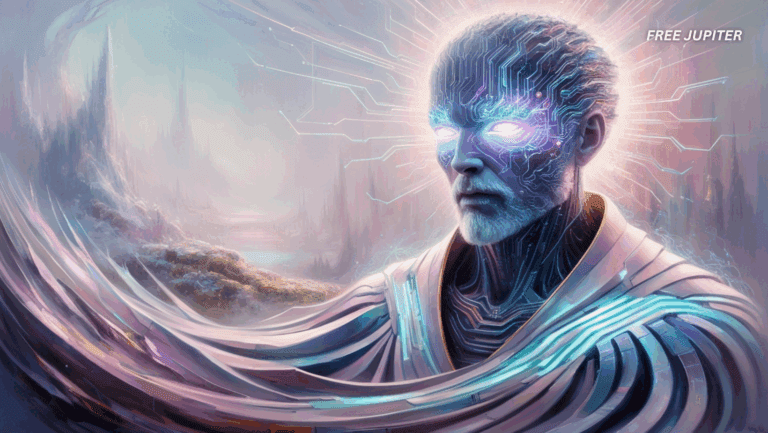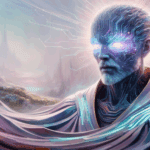Friendly Note: FreeJupiter.com shares general info for curious minds 🌟 Please fact-check all claims—and always check health matters with a professional 💙
Growing up today looks nothing like it did a few decades ago. For those under 30—mainly Gen Z and younger millennials—childhood was shaped by smartphones, streaming platforms, and social media. Meanwhile, older generations grew up with a slower, more analog world where small pleasures carried a special kind of magic.
Of course, younger people have their own advantages—instant communication, endless entertainment options, and access to entire communities online. But some everyday joys that once defined childhood and young adulthood have quietly disappeared, replaced by faster, sleeker, more convenient alternatives.
Here are 12 simple joys that many people under 30 may never get to experience in quite the same way.
1. Saturday Morning Cartoons
Before on-demand streaming, Saturday mornings meant one thing: cartoons. The ritual was universal—kids would leap out of bed, grab a bowl of cereal big enough to qualify as a mixing bowl, and plop down in front of the TV for hours of animated magic.
It wasn’t just about the shows—it was about the anticipation. You had to wait all week for those sacred hours, and once they were gone, that was it until next Saturday. There was a shared cultural rhythm: everyone at school had seen the same shows, laughed at the same jokes, and hummed the same theme songs.
Today, younger audiences can watch anything, anytime, anywhere. The ritual of “appointment viewing” is gone. Convenience has its perks, but the communal magic of Saturday morning cartoons is a relic of the past.
Read more: 5 Traits That Reveal You’re a Highly Sensitive Person, According to Psychologists
2. Developing Film
Once upon a time, taking a picture was a commitment. Film was expensive, and every click of the camera meant weighing whether the moment was worth it. When the roll was finally finished, it went off to a drugstore or a photo lab, and days later, you’d pick up a thick envelope of glossy prints.
Opening that envelope was an event. Some shots were blurry, some were unexpected, and occasionally, one turned out so perfect it got a place on the fridge or in a frame.
Today, phones capture thousands of photos without a second thought, instantly reviewed and instantly shared. While digital photography is powerful, it doesn’t quite replicate the suspense—and joy—of seeing your memories revealed all at once, like a time capsule you didn’t know you were burying.
3. Mixtapes and Burned CDs
Sharing music used to mean labor. Crafting the perfect mixtape required hours of recording songs from the radio—or later, carefully burning them onto a CD in just the right order. Each track had a purpose: the opener set the tone, the closer left an impression, and the middle carried subtle messages.
Giving someone a mixtape wasn’t casual; it was a personal gesture. A playlist link today can be shared in seconds, but a mixtape or burned CD came with effort, thought, and sometimes, a decorated cover or handwritten tracklist.
It wasn’t just music. It was communication.
4. Passing Notes in Class
Before group chats and memes, communication in class happened on folded notebook paper. Notes were often scrawled with doodles, filled with inside jokes, or carrying the nerve-wracking “Do you like me? Yes / No” checkboxes.
The thrill wasn’t just in writing—it was in the delivery. Handing it off while the teacher’s back was turned, or sneaking it across the aisle without being caught, was part of the adventure.
Today, texting is instant, but it’s also invisible. There’s no tangible evidence to tuck away in a shoebox, no faded slips of paper to stumble across years later, triggering floods of nostalgia.
5. Hearing Your Favorite Song on the Radio
For decades, the radio was a gamble. You’d wait for hours in the car or by a stereo, hoping the DJ would play your favorite song. When it finally came on, the joy was electric. People sang at the top of their lungs, sometimes trying to record it on a cassette tape before it ended.
Streaming has erased the wait—you can summon any song instantly. It’s efficient, but it lacks the wild-card magic of hearing a beloved tune unexpectedly blasting through the speakers. The randomness made the moment feel like a gift, not just a choice.
6. Memorizing Phone Numbers
Before smartphones, people carried entire directories in their heads. Best friends, crushes, grandparents—you had their numbers memorized. Dialing them on a rotary phone or keypad was second nature, and forgetting meant flipping through an address book or scribbled sticky note.
Now, most people would struggle to recite even a handful of numbers beyond their own. The brain space once reserved for phone numbers has been outsourced to contact lists, leaving younger generations without the strange pride of knowing 15 digits by heart.
7. A Childhood Without Social Media
Growing up without social media meant more time outdoors and fewer digital comparisons. Summer days stretched long, filled with bikes, sprinklers, and boredom that demanded creativity. Friendships were built face-to-face, arguments stayed local, and embarrassing moments weren’t immortalized online.
For those under 30, social media shaped adolescence in profound ways—connecting them to the world but also exposing them to pressures older generations didn’t face so young. Childhood offline wasn’t perfect, but it was private, unfiltered, and fleeting in a way that today’s digital records can never be.
8. Navigating with Physical Maps
Road trips once began not with a GPS app, but with a paper map that unfolded like a bedsheet. Parents argued over which exit to take, kids traced highways with their fingers, and mistakes sometimes led to unexpected detours that became the most memorable parts of the trip.
Later, MapQuest printouts offered step-by-step directions—but if you missed a turn, you were on your own.
GPS has made travel seamless, but it has also removed the small triumph of arriving at your destination through teamwork, guesswork, and a little stubborn determination.
Read more: Ladies, Stop Stressing—Guys Honestly Don’t Care About These 10 Things
9. Watching Commercials Together
Commercial breaks weren’t just interruptions—they were part of the shared viewing experience. Families raced to grab snacks, siblings argued over who got the couch spot, and catchy jingles became part of household language.
Some commercials were so overplayed that everyone knew the lines by heart. Others were so strange or cheesy they became inside jokes. With ad-free subscriptions and skip buttons, younger viewers miss the weird communal glue that came with enduring commercials together.
10. Answering the Phone Without Knowing Who It Was
Before caller ID, every ring of the phone was a mystery. Picking up could mean talking to a best friend, a grandparent, or—heart pounding—a crush. It could also mean enduring a telemarketer’s pitch. The suspense was half the fun.
Now, most people screen calls or text first. The unknown has been replaced by certainty, but with it, the thrill of chance conversations has faded.
11. Magazines and Newspapers in the Mail
For decades, the mailbox delivered more than bills. Magazines arrived with glossy covers, perfume samples tucked into pages, and carefully curated articles that shaped pop culture. Daily newspapers brought puzzles, comics, and the sense of being connected to the world.
Today, updates appear instantly online. Print still exists, but it no longer sets the cultural pace the way it once did. Younger generations scroll, while older ones remember the anticipation of flipping through pages hot off the press.
12. Renting Movies from a Video Store
Movie night once meant a pilgrimage to the local rental shop. Families wandered aisles of VHS tapes and DVDs, arguing over picks, laughing at outrageous cover art, and sometimes discovering hidden gems they’d never have chosen otherwise.
There was excitement in the scarcity—you couldn’t always get the new release, and sometimes you had to settle for something else entirely. Even late fees, annoying as they were, became part of the ritual.
Streaming libraries now offer endless choice, but the tactile experience—the weight of a VHS case, the squeak of rewinding a tape, the thrill of browsing shelves—is gone.
Read more: Narcissists Often Say These 16 Things to the People They Claim to Love
Final Thought
The world changes, and with it, so do the little joys that shape our memories. For older generations, these experiences carry nostalgia; for younger ones, they’re curiosities from a world just out of reach.
Convenience has brought undeniable benefits—life is faster, smoother, and more connected. But it has also quietly swept away the slower, quirkier rituals that once made everyday life a little more magical.










